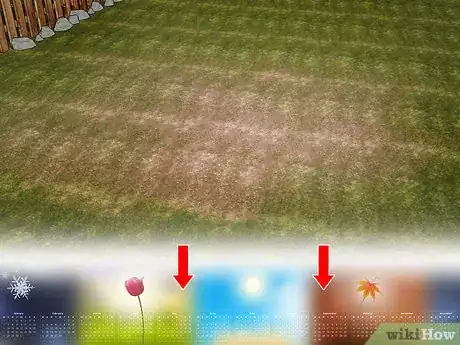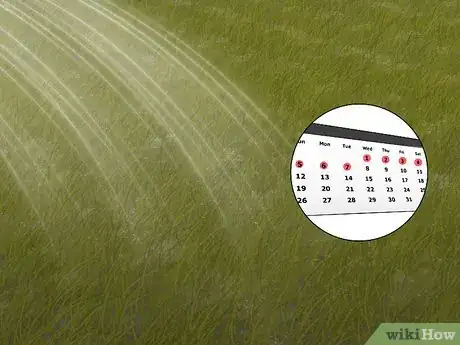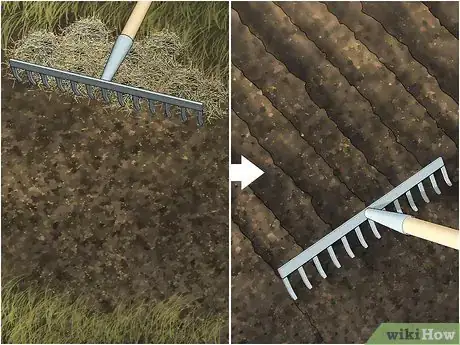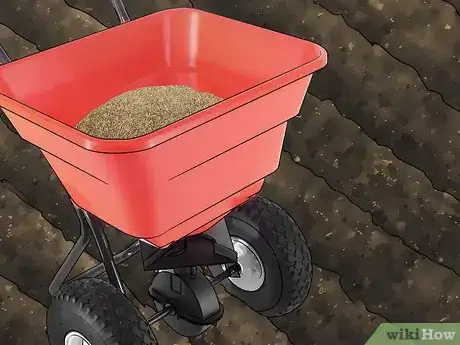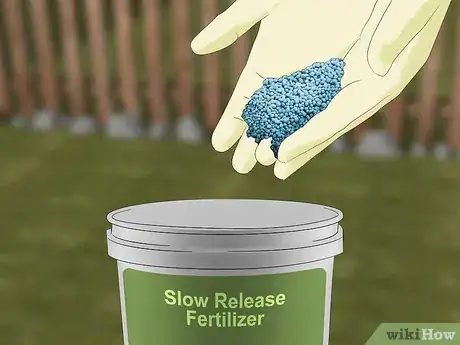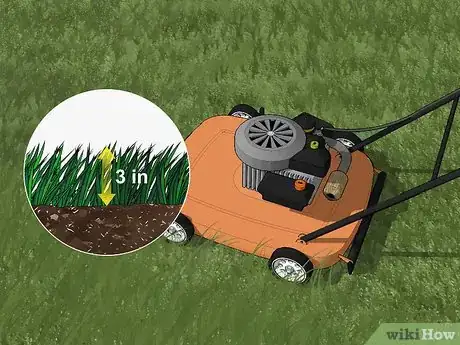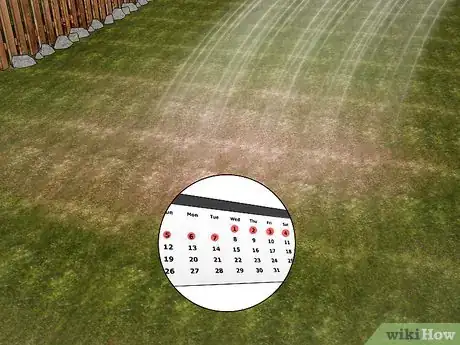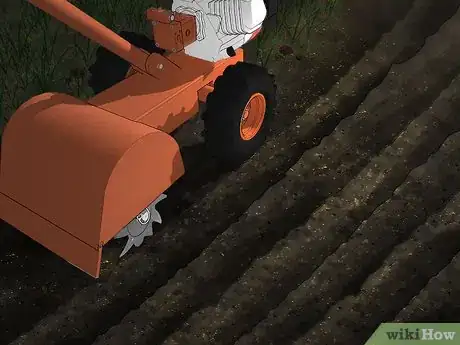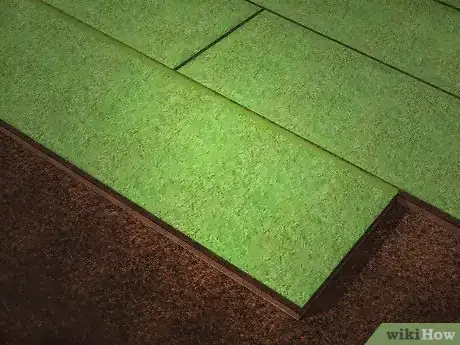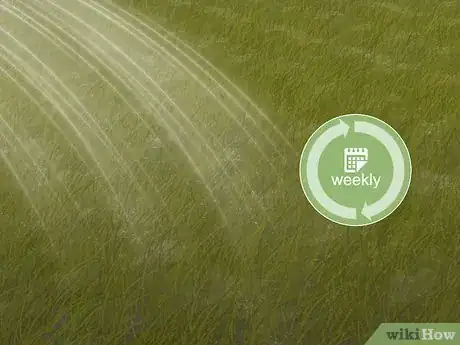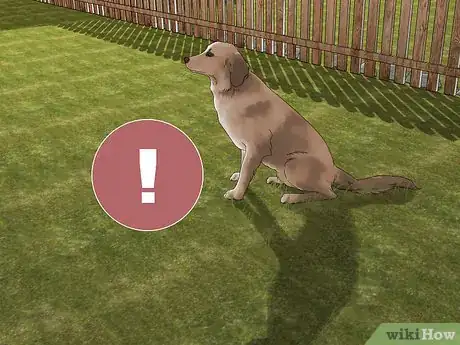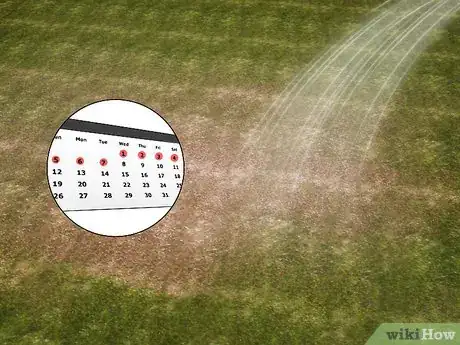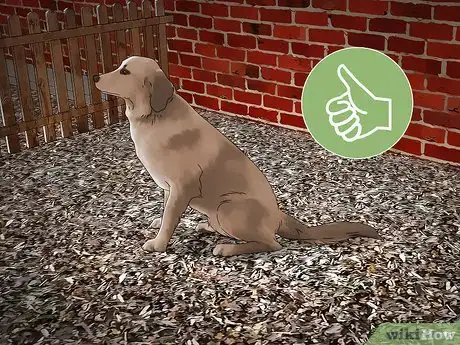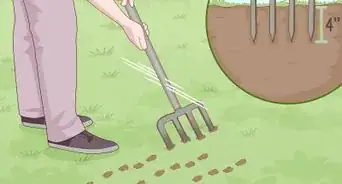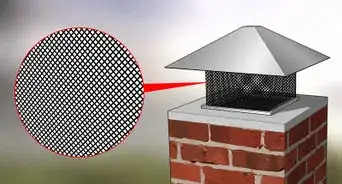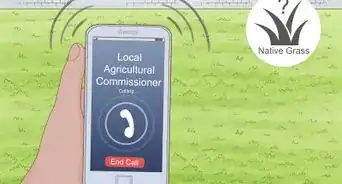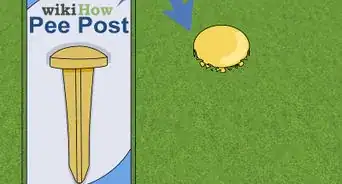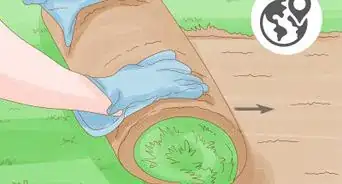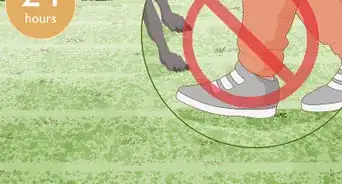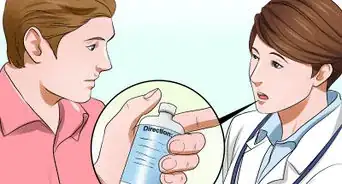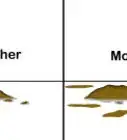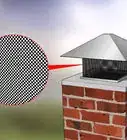This article was co-authored by Lauren Kurtz. Lauren Kurtz is a Naturalist and Horticultural Specialist. Lauren has worked for Aurora, Colorado managing the Water-Wise Garden at Aurora Municipal Center for the Water Conservation Department. She earned a BA in Environmental and Sustainability Studies from Western Michigan University in 2014.
This article has been viewed 17,660 times.
Burned patches of grass can be caused by a number of factors, including fertilizer, hot weather, and pet urine. If your grass is yellow, crunchy, and dying, you may be able to nurse it back to health with care and patience. You could have your grass looking as good as new within a few weeks or months!
Steps
Treating Fertilizer Burn
-
1Make note of how much fertilizer you use and when you use it. Over-fertilization is the most common cause of burned out grass. Only fertilize the yard in the late spring and early fall, and be sure to check the label for application directions.[1]
- In the spring, use a fertilizer with a higher nitrogen content. In the fall, select a fertilizer with high levels of potassium to encourage root growth and strength.
- Slow-release and organic fertilizers are safer for your lawn, although they take longer to work.
-
2Remove excess fertilizer using a broom or wet/dry vacuum. Sometimes, accidental over-fertilization happens because of fertilizer spills. If you’ve spilled fertilizer and can still see the granules in the grass, use a broom to wipe it away from the grass. Alternatively, you can use a wet/dry vacuum to suck it up quickly.[2]
- If you can’t see any granules, they have likely already soaked into the ground.
Advertisement -
3Water the lawn every day for a week to flush out harmful minerals. Flushing out excess nitrogen is the best way to rejuvenate a burned out yard. Apply about 1 inch (2.5 cm) of water to the yard every day for 7 days to dilute the nitrogen and other minerals in the soil.[3]
- By the end of the week, you should be able to see a small amount of new growth in the burned out patches.
- Alternatively, you can use a sprinkler to ensure even application of the water.
-
4Rake and till browned patches with dried roots. In brown areas where there is little or no improvement after watering, you’ll need to prepare for seeding the lawn by digging about 4 inches (10 cm) into the ground and loosening the soil. Be sure to work out large clumps of dirt and thoroughly mix the grass and soil.[4]
- It might be helpful to mix some potting soil or compost into the soil to encourage natural fertilization and add healthy nutrients to the area.
-
5Plant new grass seeds in the tilled areas. Sprinkle seed into the tilled patch according to the package directions. After the seed is applied, add about 0.25 inches (0.64 cm) of soil on top of the seed, water the area with about 1 in (2.5 cm) of water, and partition off the area so no one steps on it.[5]
- For the week after planting, apply 1 in (2.5 cm) to the patch every day for a week to encourage growth. Don’t let the seeds dry out!
- A thin layer of straw on top of your new grass patch can protect it from birds and other animals that might want to eat the seed. It will also prevent the seeds from washing away during watering.
-
6Switch to slow-release, organic fertilizer. Compost and organic fertilizer are much gentler than their manufactured counterparts, and will help to reduce stress on a damaged yard. Once your patches of grass have established roots, you can apply slow-release and organic fertilizer as normal 2 times per year.[6]
- Always follow the instructions on the fertilizer package to avoid applying too much of the product. When in doubt, apply less than the package directs, especially when your yard is recovering from chemical burns.
- Wear gloves when applying fertilizer to prevent skin irritation.
-
7Wait until the new grass is 3 inches (7.6 cm) high before mowing. This will ensure that you don’t interrupt the growing process and that the grass has a chance to establish deep roots. If you mow too early, you run the risk of killing your new grass.[7]
- Always leave the cuttings when mowing new grass, as they can provide more nutrients and moisture to the ground.
Caring for Sun Scorch
-
1Water the dry areas with 1 in (2.5 cm) of water every day for a week. Sun scorched areas are caused by a lack of water. Focus your efforts on patches that are completely dry and brown. Within a week, you should see new growth.[8]
- This is the only way to completely salvage drought-stricken yards without re-sodding.
-
2Till the brown patches if they don’t improve after watering. Dig about 4 inches (10 cm) into the ground and mix the dirt and dead grasses together. Break up all large clumps of dirt and roots. This prepares the area for sod, which consists of thick patches of new grass.[9]
- To encourage the roots of the sod to attach to the soil, you can mix in compost or topsoil as you till. These will provide extra nutrients to the grass while they’re growing.
-
3Lay sod on the tilled patches to replace the scorched grass. Applying sod can be pricey, but it’s effective for replacing drought-stricken grass. Simply roll out the sod to cover the bare spot, and press it into the ground to ensure that the roots take hold of the soil.[10]
- Be sure to keep up with watering the sod just as you would the grass seed, by applying 1 in (2.5 cm) of water daily for a week.
-
4Maintain a regular schedule for watering the grass to prevent scorching. Watering the grass is the only way to ensure that the sun doesn’t scorch your new patches. When your grass is established, water the yard once per week with about 1 in (2.5 cm) of water.[11]
- You might consider investing in a sprinkler system to ensure that your grass is routinely watered, especially if you tend to forget!
- If you plan on mowing your grass, refrain from watering for 2 days before you mow to prevent tracks from the wheels.
Addressing Pet Urine Spots
-
1Watch where your pets go to the bathroom in the yard. Your burned-out grass may be caused by minerals and proteins in your dog’s or cat’s urine. Keep an eye on where they do their business, because animals tend to go in the same few places that they’ve marked as their territory.
- Contrary to urban legend, both male and female dogs and cats can cause urine spots in a yard.
-
2Water the urine patches with 1 in (2.5 cm) of water every day for a week. The water will flush out the harmful minerals and salts from the urine that have gotten into the roots of the grass. During this time, block off the patchy areas so that your pet isn’t tempted to urinate there.
- After a week, you should see signs of new growth. If not, you will need to reseed the patches.
-
3Train your dog or cat to go to the bathroom in a gravel or mulch area. This is the only solution to burned spots that come from pet urine. Reward your pet for going to the bathroom in an area other than the grass. Try using different methods to see which work the best. Some tactics include using food treats or positive language for good behavior.
- If your pet is older, you may have to intervene a few times by picking it up and moving it when you see it start to do its business in the yard. Be diligent and patient with your pet!
- Make sure your pet always has access to water when it’s outside, which will help to dilute the animal’s urine.
- Try clicker training your dog or cat to get them to go in a designated area.
-
4Look for urine-resistant grasses if pet urine is a persistent problem. In some areas, you can purchase or order pet urine-resistant hybrid grass stains, such as Dog Tuff. This grass is drought tolerant and resists yellowing due to pet urine exposure.[12] Check with a local garden supply store, or find an online retailer that can ship Dog Tuff to you.
Warnings
- Always wear gloves when applying fertilizer, as it contains chemicals that can be irritating to the skin.⧼thumbs_response⧽
References
- ↑ https://www.consumerreports.org/cro/magazine/2014/05/how-to-fix-the-5-most-common-lawn-problems/index.htm
- ↑ https://www.todayshomeowner.com/help-for-fertilizer-burn-in-lawn/
- ↑ https://www.backyardboss.net/lawn-fertilizer-burn/
- ↑ http://greensideupblog.com/2010/11/dead-grass-here-is-how-to-fix-it/
- ↑ http://greensideupblog.com/2010/11/dead-grass-here-is-how-to-fix-it/
- ↑ https://www.todayshomeowner.com/help-for-fertilizer-burn-in-lawn/
- ↑ https://www.backyardboss.net/lawn-fertilizer-burn/
- ↑ https://www.backyardboss.net/lawn-fertilizer-burn/
- ↑ http://greensideupblog.com/2010/11/dead-grass-here-is-how-to-fix-it/
About This Article
To quickly repair a patch of burned grass, start by raking up the grass and soil about 4 inches into the ground until it is thoroughly mixed. Once the soil is loosened, roll out a layer of sod on top of the bare patch, and press down on the area to ensure that the roots take hold of the soil underneath. Then, coat the area in 1 inch of water, and continue watering it for a week. For more tips from our Horticulturist reviewer, including how to prevent further damage, read on!
